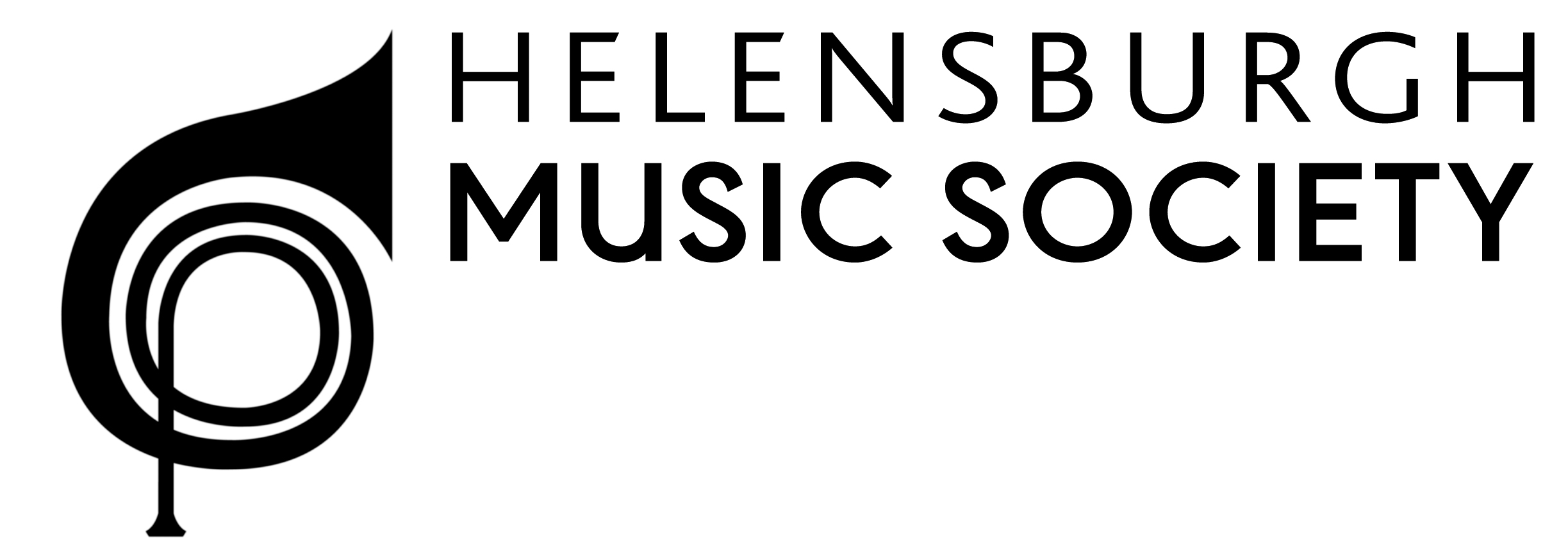Helensburgh Music Society History
taken from the 30th and 40th Anniversary speeches by David Bruce
To begin with, it wasn’t going to be a music society at all – at least that was only going to be part of it. In the late 1970s, there was a feeling that Helensburgh was under provided with opportunities to make and hear good music. True, the Oratorio Choir and the Dorian were doing well, the Helensburgh Orchestral Society was growing and the Operatic Society was enjoying its annual success. There was also the long-running series ‘Sunday at Seven’ at the West Kirk but there were still major gaps to be filled.
One of these was, conspicuously, that there was no regular platform for professional performances of chamber music.
There were also wider questions concerning access to the arts in Helensburgh and the first idea to be discussed, by a group led by Alan Berry and Walter Blair, was that there should be an Arts Guild to promote new activities and co-ordinate what already existed.
In that context, discussions were held with the Scottish Arts Council but during a visit to the town by SAC’s Music Director, Christie Duncan, it became obvious that whatever the wider ambitions, there had to be a starting point and that starting point was surely a music society. With Duncan’s encouragement and support, the Helensburgh Music Society was formed in 1980 with Alan Berry as its first Chairman, and with Barbara Bruce and John Tasker as Secretary and Treasurer.
In fact, the Music Society had its precedents. Such societies flourished in other towns nearby, notably in Milngavie, Bearsden and at Erskine where Park Mains provided a useful model for Helensburgh. But Helensburgh itself had once had a music society of its own. In the 1940s, The Ministers’ Art Club had presented chamber music concerts of astonishing quality, in the Victoria Halls. The list of performers included Benjamin Britten and Peter Pears, Julian Bream, Denis Matthews and Denis Brain. And, before the war, celebrated musicians such as Percy Grainger, had played in the town.
I then talked about the piano problem and how it was solved by the acquisition of the Grotrian Steinweg, and the early programming policy which had the interesting method of each committee member being responsible for choosing and pursuing their own ideas for who should come to play to us.
So the first four concerts, in the spring of 1981 were the Scottish Wind Virtuosi, the Edinburgh Quartet, The Edinburgh University Singers, and the Pianist, Lawrence Glover. High grade programming, and it got even higher with the second season concluding with a concert by Victoria de Los Angeles.
Nor could the Society be accused of classical elitism. There was, as there still is, plenty of variety. Successive seasons saw visits from Chris Barber's Jazz Band, Humphrey Lyttelton; and the Fairer Sax. But at its heart there certainly was classical quality: Howard Shelley, Craig Sheppard, Steven Osborne, Moura Lympany, no less, and that is just the pianists. The quartets – Mistry, Emperor, Brindisi, the Coull, etc, etc. All great stuff.
But what is the legacy of those days?
An innovation that seemed radical at the time was to avoid using the hall stage whenever possible but present performances ‘in the round’ so that, for example, a quartet might find itself with its audience on three sides. Just as significant was the proposal that concerts would include an interval exhibition. The first committee included Tony Vogt, who, with his wife Berit and Mary-Jane and Kim Selwood, originated the exhibition idea. It was also their notion to invite Sandra Munro to prepare flowers for each performance, a special addition to these occasions much appreciated by audience and performers alike.
Perhaps the most touching memento of the exciting beginnings of the Society is in its logo designed for us by another of the great Helensburgh enthusiasts, the late Ted Odling. It is his image of the horn that appeared on the first poster, the first programme, and has been with us ever since. But most important of all, in terms of continuity and enjoyment, has been the Society’s commitment to maintaining the highest standards of programming and presentation from the very beginning to the present day.
Well, nothing much to add to these sentiments, but maybe just a little. I would argue that the sixteen founder members of the Society – most of us still here – did something for the town, but also for the advancement of music. Nowadays, the entertainment options, at home or in the community, are many more than they used to be. That is surely good. But there is a generational crisis in music education as fewer and fewer opportunities are available in schools for aspiring musical youngsters, with serious implications for the future of music making – the sort that eventually comes through to societies like ours.
The Music Society was created by people of initiative, enthusiasm, and determination. That energy and commitment is still required and, fortunately, is still here in this Society. So, with many congratulations to all those who are keeping it going and looking to the future, I say 'Happy Fortieth', and I look forward very much to recapping on this brief talk at the fiftieth celebration in ten year's time.
